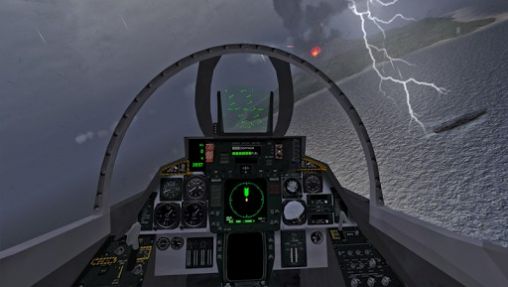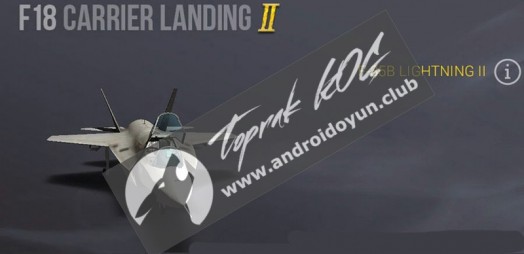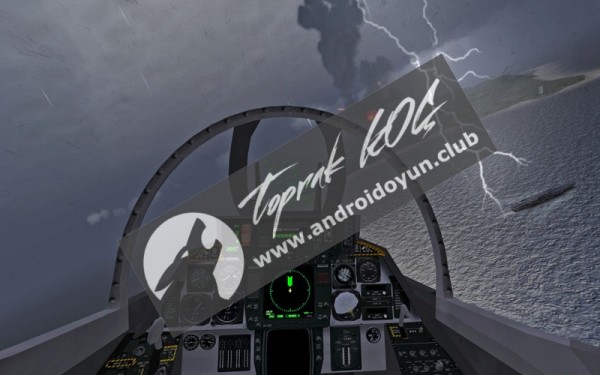

So in the last few 10 seconds before landing you should just concentrate on moving your joystick to get your Hornet on the deck (even if your speed gets higher during that process). Once you are close enough to the carrier your approach should be stable enough so you do not have to make any throttle adjustments or big adjustments of your altitude/heading. Again your velocity vector can help you to find the right sink rate, when it points on the carrier (or maybe a little bit above the carrier to make sure you do not get dangerously low). So when your are very close to the carrier you should not be much higher than 300 feet. The carrier deck is on an altitude of around 70 feet above the ground. At this time flying your Hornet should be as easy as steering a truck on an aerial highway. Your pitch trim should allow you to make almost no pitch corrections by yourself with your joystick. If you have done it correctly your velocity vector should point roughly on the carrier while being between the markers of the "E". 10nm miles sound like a lot, but noobs will have enough things to do during that time until all thing are set up properly.

For beginners this will take some time, so it is best to approach the carrier from a distance of about 10nm, which will give you enough time to adjust your aircraft. So adjust your throttle and your trim to get the optimal AoA at around 130-140 knots for your final landing speed. The slower your speed, the easier your landing will be. Then your AoA will be optimal.Īn optimal AoA allows you to stay up in the air while flying at a low speed around 130-140 knots. To get the optimal AoA your velocity vector (the small circle on the HUD) should be between the markers of the "E" on your HUD. Once your gear is lowered you should see a symbol on your HUD, which looks like a stretched letter "E". It is very important to watch your angle of attack (AoA). Then you use your throttle to adjust your glide slope. basically you should be able to release the stick and the flight path marker should be in the middle of the E bracket regardless of your speed. You should trim to fly on speed angle of attack. it require some practice but once you master it your landings will be fantastic -) In genereal in all planes/helis in dcs and real world trim trim trim trim.Īnd once you are trimmed use the power to add/reduce to gain height or loose height. in general TRIM your plane when you are flying streight and at the landing speed you like to land with. ( 2-4 seconds before you land ) and add power/lower power so the ball is in the middle.

The last 100m when you are lined up and ready to land, then look at the ball and forget about your instruments. Tip if the ship is sailing in direction 300, then -9 degrees and then you shall land in direction 291. The lighter your plane is the slower you can fly, the more easy it is to land. Remember to dump fuel so your plane is not to heavy when you land. Try out the latest evolution of the RORTOS flight system, already appreciated by millions of users around the world: unprecedented graphics, realistic weather conditions and a REPLAY function that lets you review your flight moves to immediately share with your friends.įor an even more thrilling experience, connect two devices online and activate the multi-screen mode.TIP. Take control, climb into the realistic 3D cockpits and fly the most famous military aircrafts, faithfully reproduced.Įxceed your limits and get the excellence in all 90 engaging challenges!

The flight deck is only 150 meters long, just enough to stop the aircraft.Īccept the challenge, take on over thirty missions in the world's most dangerous and spectacular scenarios and join the best Top-Gun pilots. Landing on an aircraft carrier is one of the most difficult tasks a pilot has to execute. The most advanced aircraft carrier landing system ever created.


 0 kommentar(er)
0 kommentar(er)
